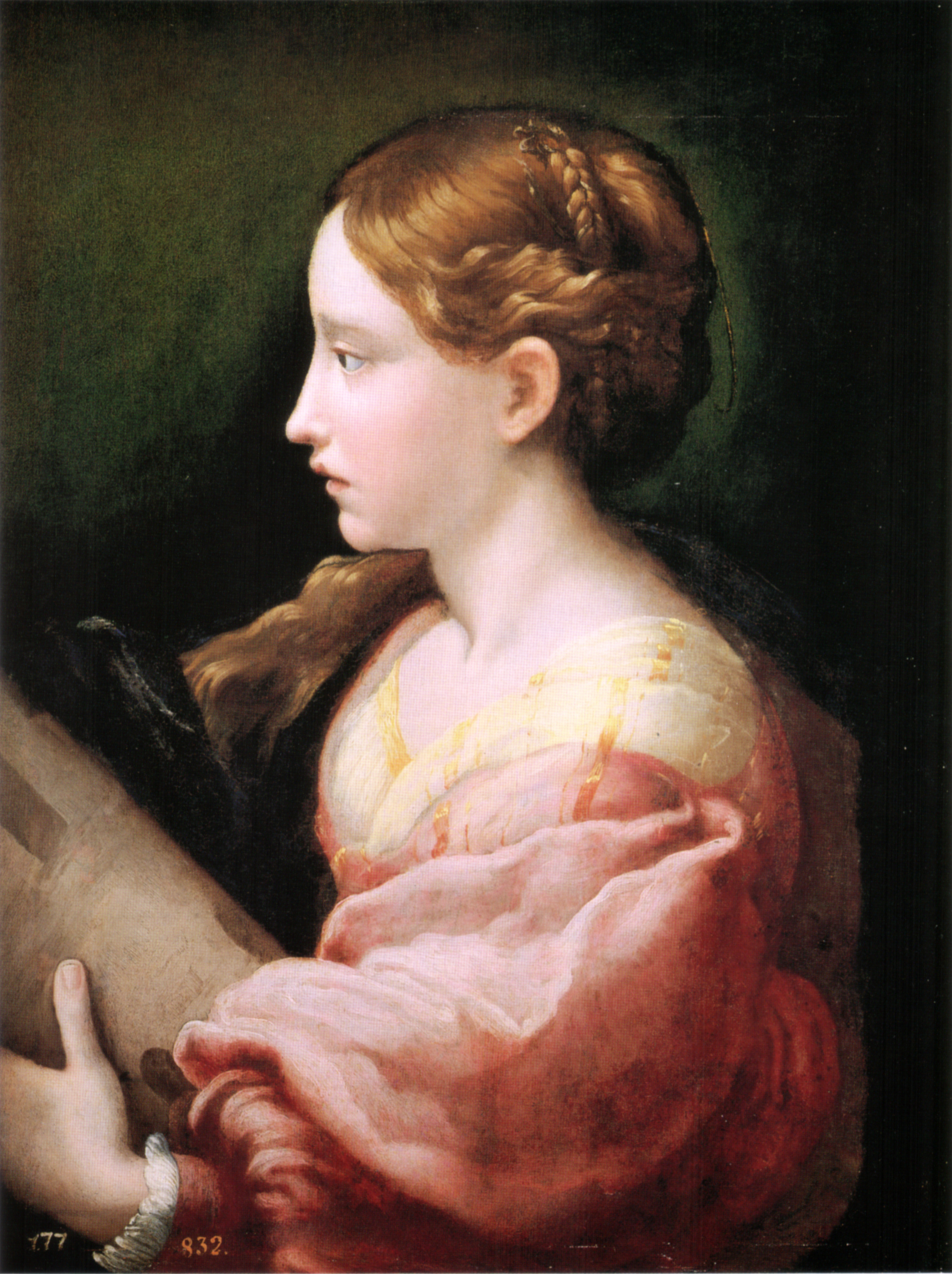|
Saint Barbara (Parmigianino)
''Saint Barbara'' is an oil on panel painting by Parmigianino, created ''c.'' 1523, now in the Prado Museum in Madrid. Copies of it are in the Mauritshuis (inv. 354), Pomona College and Chatsworth House (inv. 508). The painting arrived in Spain in 1686, when it was recorded in the real Alcázar di Madrid, and from 1746 in the Royal Palace of La Granja de San Ildefonso. It is universally attributed to Parmigianino and specifically his youth by comparison with the Virgin Mary in his Bardi Altarpiece and with his '' Saint Apollonia and Saint Lucy''. Popham identifies a drawing at the Bonnat Museum in Bayonne as a possible preparatory study for the work. History It is probably the ''Saint Barbara'' acquired in 1624 with other works by princess Giulia d'Este for cardinal Alessandro d'Este and recorded in 1662 in the Muselli collection in Verona, the latter work being reported as "to my taste neof the most beautiful paintings by Parmigianino ..by an arm's length".Mario Di Giam ... [...More Info...] [...Related Items...] OR: [Wikipedia] [Google] [Baidu] |
Parmigianino - Saint Barbara - C
Girolamo Francesco Maria Mazzola (11 January 150324 August 1540), also known as Francesco Mazzola or, more commonly, as Parmigianino (, , ; "the little one from Parma"), was an Italian Mannerist painter and printmaker active in Florence, Rome, Bologna, and his native city of Parma. His work is characterized by a "refined sensuality" and often elongation of forms and includes '' Vision of Saint Jerome'' (1527) and the iconic if somewhat anomalous '' Madonna with the Long Neck'' (1534), and he remains the best known artist of the first generation whose whole careers fall into the Mannerist period. His prodigious and individual talent has always been recognised, but his career was disrupted by war, especially the Sack of Rome in 1527, three years after he moved there, and then ended by his death at only 37. He produced outstanding drawings, and was one of the first Italian painters to experiment with printmaking himself. While his portable works have always been keenly collected ... [...More Info...] [...Related Items...] OR: [Wikipedia] [Google] [Baidu] |
Saint Apollonia And Saint Lucy
In religious belief, a saint is a person who is recognized as having an exceptional degree of holiness, likeness, or closeness to God. However, the use of the term ''saint'' depends on the context and denomination. In Catholic, Eastern Orthodox, Anglican, Oriental Orthodox, and Lutheran doctrine, all of their faithful deceased in Heaven are considered to be saints, but some are considered worthy of greater honor or emulation. Official ecclesiastical recognition, and consequently a public cult of veneration, is conferred on some denominational saints through the process of canonization in the Catholic Church or glorification in the Eastern Orthodox Church after their approval. While the English word ''saint'' originated in Christianity, historians of religion tend to use the appellation "in a more general way to refer to the state of special holiness that many religions attribute to certain people", referring to the Jewish tzadik, the Islamic walī, the Hindu rishi or Sikh ... [...More Info...] [...Related Items...] OR: [Wikipedia] [Google] [Baidu] |


